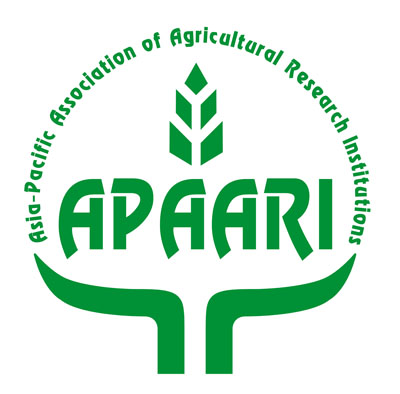Understanding innovation partnerships: the timeline tool
Strong partnerships between multiple and diverse stakeholders are essential to promote agricultural innovation. Planning effective Capacity Development (CD) interventions require a better understanding of how these partnerships begin and unfold. The timeline method is a participatory tool that helps to uncover the history of a partnership by placing its pivotal moments in chronological order. Through this exercise, stakeholders reflect on the innovation process, discuss patterns and share perceptions on key challenges and breakthroughs. The result is a story of which they can say: “Yes, this is how it happened, and these are the most important moments”.
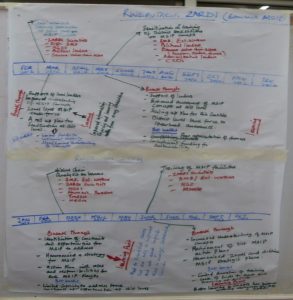
Timeline exercise performed during a capacity assessment’s workshop
This factsheet is part of a series outlining tools and approaches to promote more effective capacity development for Agricultural Innovation Systems (AIS). These tools and approaches put to use the principles of the Common Framework of the Tropical Agriculture Platform (TAP), a G20 initiative. They are applied through the Capacity Development for Agricultural Innovation Systems (CDAIS) project, funded by the EU and jointly implemented by Agrinatura and FAO in collaboration with national partners in Angola, Bangladesh, Burkina Faso, Ethiopia, Guatemala, Honduras, Laos and Rwanda.
A tool for joint reflection on a network process
The timeline exercise is generally used when stakeholders start the self-assessment of their innovation partnership. Through this tool, different points of view can be shown next to each other and appreciated. Stakeholders are asked to recall moments they see as significant for the partnership, from the start of their involvement until present. These moments should refer to positive and negative events, as well as breakthroughs and challenges experienced by the partnership.
Being the timeline a participatory exercise, innovation facilitators have a crucial role in it. One of their key responsibilities is monitoring that stakeholders focus on the evolution of the partnership.
How to apply the timeline tool?
The timeline method has been used in the context of the CDAIS project to increase understanding of innovation partnerships in selected countries. On the basis of this experience and the available material on the subject, some practical guidelines are proposed to successfully apply this instrument.
At the start of a timeline session, the following material should be available: flipchart paper; masking tape; black, green and red marker pens.
The steps below are then suggested:
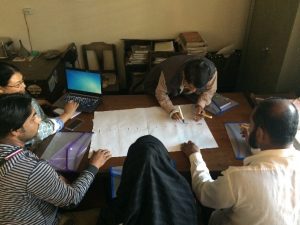
Timeline session during a CDAIS workshop
- Spread two to three sheets of flipchart paper horizontally on the wall;
- Draw an horizontal line in BLACK in the middle of sheets and divide it into time periods: start with when the innovation partnership began and finish in the current year. The unit for measuring time will depend on when the partnership started: if it is a new initiative, it can be divided into months; if it has been in place for some years, it could be divided into quarters;
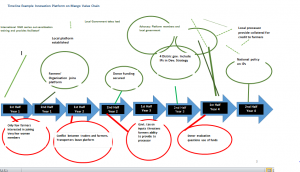
- Write breakthroughs and positive events on top of the line corresponding to when they happened. Draw a GREEN circle around the text. Such events likely made collaboration/communication in the partnership function better, e.g. setting up regular meetings between farmers and processors;
- Write challenges/setbacks below the line. Draw a RED circle around the text. These challenges mostly relate to events that damaged collaboration and communication in the partnership;
- Explain events or opportunities that led to the breakthroughs and write them in GREEN next to the breakthrough;
- Do the same for the challenges and write events or threats in RED next to the challenges.
How to interpret results?
Once the last comment is posted on the timeline, the whole group (facilitators included) review the result. The objective is to achieve a common understanding of what has been written down so far.
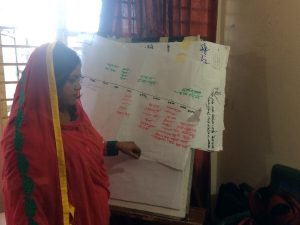
Interpreting a timeline during a CDAIS workshop
No comment or statement should ever be removed. It doesn’t matter if its validity is contested. Every point of view must be collected and appreciated.
Interpreting correctly a timeline requires skilled facilitators. Their job will be to guide stakeholders through the phases outlined below and synthesize results.
General impression
Facilitators ask participants what is their first impression of the timeline. The group should recognize patterns: some periods, for example, draw mostly negative comments, while others are seen as more positive. Breakthroughs usually occur after difficult periods.
Reading the statements
Statements are read in chronological order. Facilitators make sure that all statements are well understood. In case of a large number of participants, there might be clusters of similar comments. These can be summarized.
Points for further discussion
Once the reading is done, facilitators ask stakeholders their feelings about the future of the partnership. These comments can be listed on a flip chart and discussed afterward.
Interviews
The timeline provides a good overview of the partnership’s development. However, statements are inevitably brief and might overlook important information. To uncover missing details and fill gaps in the story, facilitators can engage stakeholders in a round of interviews.
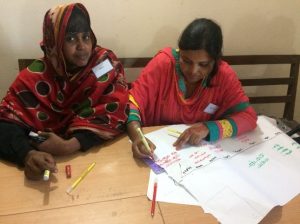
Adding information to a timeline – CDAIS workshop
There is no specific format for the interviews. Stakeholders can expand previous statements, provide new information about their involvement in the partnership, or talk about past events and future endeavors in their network.
How to create a timeline narrative?
Draft narrative story
Stakeholders and facilitators might want to address further the timeline’s results. One way to do it is to create a “draft narrative story”, and later consolidate this knowledge into a timeline report. The ‘draft narrative’ is essentially a timeline approached as a movie-script, where ‘scenes’ represent the most important periods in the history of the partnership. Normally, the whole history can be packed into four to six scenes. Such scenes can be recognized by the concentration of statements in the timeline.
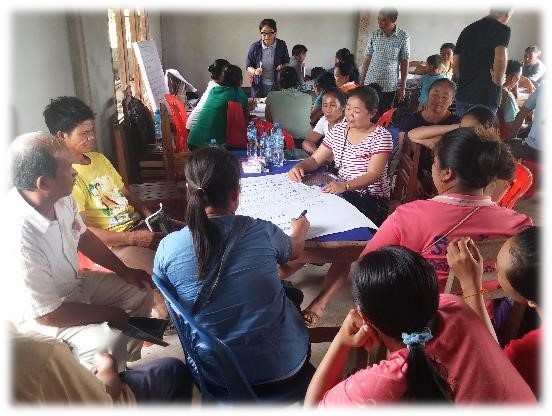
CDAIS’s capacity assessment workshop
To clarify the content of a scene, it is helpful to give it a newspaper-like title. Each scene should have:
A starting point from which the partnerships will move forward – hopefully in a positive way;
A major development, caused either by outside forces or by events occurred in the partnership;
A number of interventions done by stakeholders to make a difference for the partnership;
A conclusion. The partnership is in a different situation from the one experienced at the beginning.
Feedback session
After the ‘draft narrative’ is completed, stakeholders provide their feedback. It is important that they recognize their stories in the document. As stated before, different opinions must be incorporated and appreciated.
Timeline report
The draft narrative and the comments received during the feedback session provide the basis for the timeline report. This is a longer version of the draft narrative story. As for the draft narrative, this document describes in a concise manner the history of the partnership through scenes, to which a newspaper headline is given. Such reports are generally used as a basis for further analysis.
For more information on the different CNA tools and approaches, check TApipedia and the NIF Training Manual (Exercise Sheet D2S2b: The Timeline Tool).
Other reference: http://linkconsult.nl/files/Timeline-Guide-for-Facilitators.pdf
